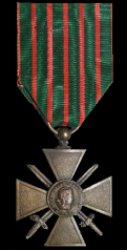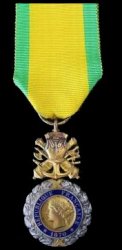|


|
H. Clyde Balsley, a slinder, hawk nosed youth of twenty, had worked in his mothers bakery in San Antonio, Texas before coming to France in 1915 as a volunteer ambulance driver. The young Texan, upon arriving at the N.124, was at first viewed with skepticism because of his youth and inexperience. Balsley's youthful enthusiasm, coupled with his capacity for hard work soon won over the hardened pilots of the Escadrille.
The average fighter pilot, on the Western Front, had a life expectancy of two weeks. Every time a new pilot returned from a patrol he believed that his chances for survival improved. This thinking was not without merit. On the other side of the coin, the pilots who had been on the front lines for several months began to believe that they had out lasted thier luck and were living on borrowed time. The truely critical period was was the first few days of combat.
Clyde Balsley's short career was typical of green pilots on both sides of the war in mid 1916. Balsley had flown a number of practice missions behind the Front before being taken on patrol into enemy territory. On the morning of June 18, Captain Thenault, leading the patrol had reached the Front with Rockwell, Prince, and Balsley. Flying at 15,000 feet they confronted the uppermost of a three layer enemy group. This was the largest single group, estimated at 40 aircraft, that any of them had ever seen. Thenault swept wide of the enemy, cautiously coming up behind them with the three Americans following, but staying out of range of enemy fire.
The uppermost layer of enemy aircraft were made up of 15, two-seater Aviatik B1 reconnasiance aircraft. One of the Aviatek's then dropped down and slid below them. Prince took the bait and nosed down on the enemy aircraft with Balsley following. Prince's helmet was hit by the enemy gunner but the bullet missed his head. He dove past the Aviatik and continued to race for home. With the Aviatik coming up in Balsley's sights at close range he fired his Lewis only to hear the report of a single round, his gun had jammed. With no time to clear his weapon an now with two Aviatiks on his tail he evaded the enemy by diving into a cloud but one of the following bullets struck him in the hip and exploded against the bone. Even though wounded he managed to pull the Nieuport out of the dive just above the tree tops. With his aircraft still loosing altitude he cleared the trenches of the forward French Infantry only to be snagged by the barb-wire at the reserve trenches. The Nieuport flipped over on it back and Balsley released the catch on his seat belt and fell to the ground. Four French soldiers crawled to him and drug him back to a holding area for the wounded. A doctor there injected him with antitetanus serum and tagged him to be sent to the hospital at Vadelaincourt.
Captain Thenault unable to locate either Prince or Balsley assumed them both to be dead. He decided to withdraw and return to base rather than take on the suicidal odds that faced them.
Balsley spent six weeks at Vadelaincourt before being sent to an American hospital at Neuilly. He underwent surgery eight times and was not able to return to the United States until the fall of 1917. The French decorated him with the Medaille Militaire and the Croix de Guerre. H. Clyde Balsley finished the war as a Captain in the United States Air Service stationed in Washington D.C.